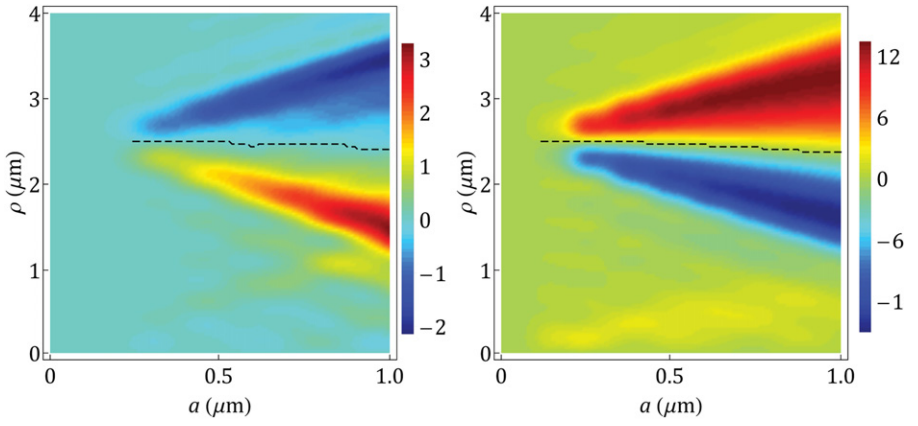It is well-known that light can carry both linear momentum and angular momentum (AM) when interacting with a small particle, the optical linear momentum or/and AM can be transferred to the particle, resulting in observable mechanical effects.
Unlike vortex phase-relevant orbital momentum flow whose direction is specified by the sign of topological charge, the direction of spin momentum flow is determined by the product of the field’s polarization ellipticity and radial derivative of field intensity.
However, because the radial gradient force always tends to restrict the probe particle, the effects of placed particles in the field are difficult to observed directly. Are there any methods to remove this barrier?
A research team led by Prof. Dr. YAO baoli from Xi'an Institute of Optics and Precision Mechanics (XIOPM) of the Chinese Academy of Sciences (CAS) reported a spin momentum-dependent of particles in a circularly-polarized annular focused field. The results were published in New Journal of Physics.

Calculated azimuthal force as a function of particle’s radius and radial position.(Image by XIOPM)
They proposed introduction of an auxiliary radially-polarized illumination (incoherent with the above circularly-polarized field) whose ring-like focused field have no any azimuthal momentum flow and can be used to adjust the particle’s radial equilibrium position to facilitate spin momentum detection at different radial positions.
With the introduction of this auxiliary field, a stable trapping along the longitudinal direction is also achievable, making it possible to watch with ease the particle’s spin momentum-dependent orbital motion even its reversal on the two sides of the ring of intensity maximum.
The proposed spin momentum-dependent orbital motion may enrich our understanding of optical linear and angular momentum.
Download: